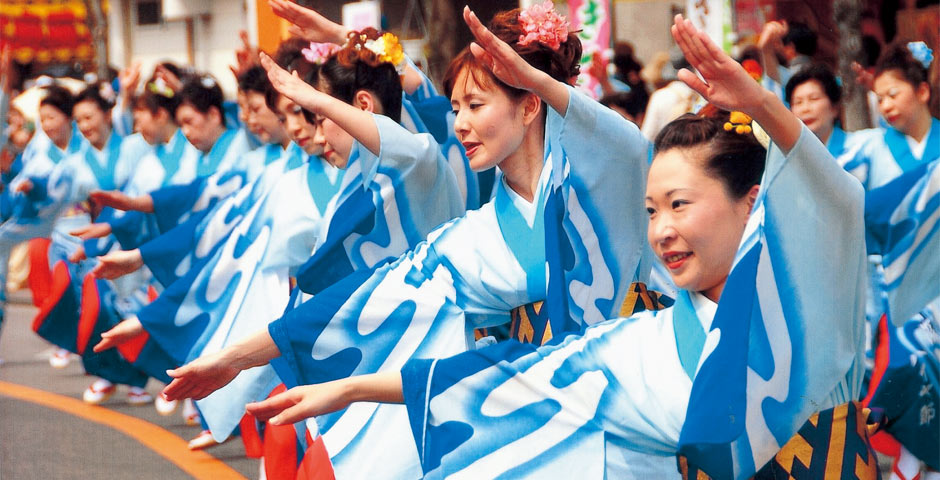

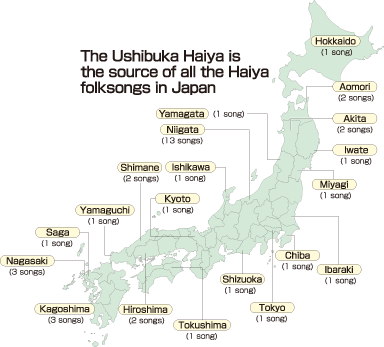
The South Wind Sings the Song of the Haiya
Ushibuka is the birthplace of the Haiya folksongs sung throughout Japan
The Haiya-Bushi or Haiya Melody was originally a song performed by the women of Ushibuka to welcome visiting boats. Ushibuka, with its excellent natural harbor and fishing grounds, has long flourished as a port town and refuge from storms for boats and ships from the farthest reaches of Japan. The Haiya, sung during celebrations and drinking bouts, spread nationwide during the Edo Period, and is considered to be the source of the popular rhythmical Okesa and Jinku folksong tunes sung in different regions of the country. An exciting Ushibuka Haiya Festival is held annually in April.
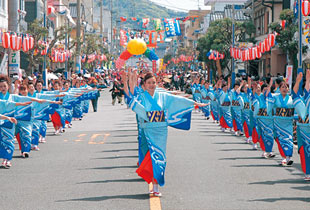
Main event of the Ushibuka Haiya Festival
Grand Parade of Ushibuka Haiya Dancers
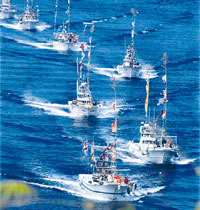
Fleet of fishing boats
The Ushibuka Haiya Festival brings the colors of spring to Amakusa
The Ushibuka Haiya Festival is the largest event welcoming spring to Amakusa. During the 3-day festival the entire community is immersed in the Haiya molody with 5,000 dancers young and old, men and women, winding their way through the narrow streets. Side events include a fisheries fair and a parade of fishing boats.
Inquiries:Ushibuka Haiya Festival Organization Committee
Tel: 0969-73-2111 Time: in mid-April
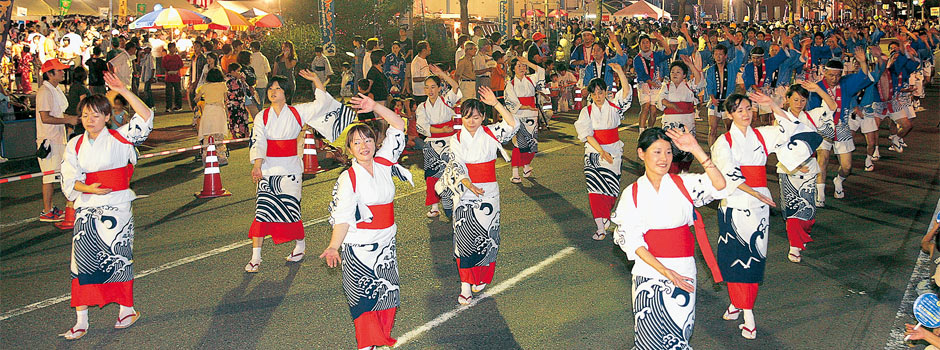
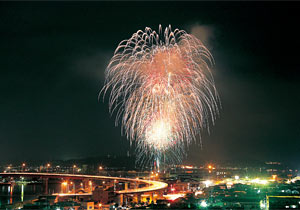
Amakusa Honda Festival Fireworks Display
Amakusa Hondo Haiya Festival
The Amakusa Hondo Festival is one of the two Amakusa Haiya events of summer. Women in seasonal kimonos and men sporting traditional headbands dance through the streets to the pulsing beat.
Want to join us? Spur-of-the-moment volunteer dancers are welcome!
- Inquiries: Amakusa Hondo Haiya Festival Organization Committee
(Hondo Chamber of Commerce and Industry) - Tel: 0969-23-2001
- Time: End of July~Beginning of August
Traditional Handcrafts of Amakusa
-
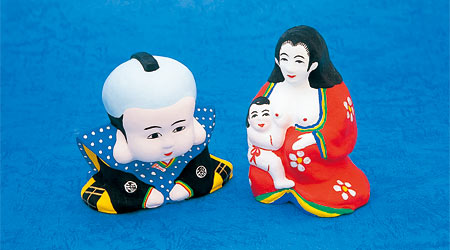
Amakusa Earthenwear Dolls
Traditional local toys. There are about 100 different figures including a mountain hag and a sumo wrestler. Unglazed molded figures undergo bisque firing and are hand-colored.
-
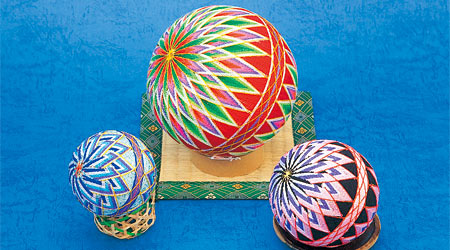
Amakusa Balls
Traditionally sea sponge, vegetable sponge, or fern was used as a core which was wrapped with cotton and shaped into a ball. These beautiful objects are popular as ornaments and souvenirs.
-
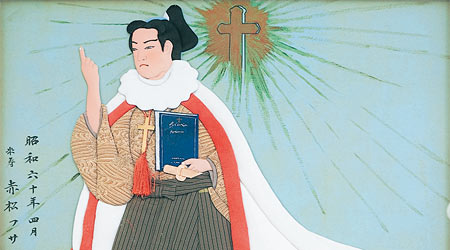
Amakusa Oshie Pictures
Parts of an image are made separately of colorful stuffed fabrics and then arranged on a background board to complete the picture. Oshie Pictures are greatly appreciated as wall hangings.
-
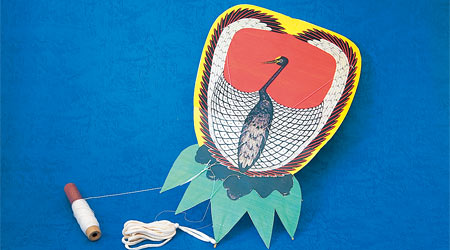
Amakusa Brahman Kites
It is said that Portuguese missionaries introduced Brahman kites to Amakusa at the beginning of the Edo Period. The bamboo- stick-frame kites are now a very popular folk art.
Discover the Culture of Amakusa
Amakusa Cultural Exchange Center
This unique western-style building of the early Showa Period (c. 1930) was first appreciated for its modern construction techniques. In March 2006 it was nationally recognized as a Tangible Cultural Asset and now offers a place for the hands-on learning of traditional crafts and skills while preserving its architectural importance.
- 8-25 Funano'o-machi, Amakusa City
- Open: 9:00~17:00 Closed: Mondays
(or the following weekday after a Monday national holiday),
the day after a national holiday, and Dec. 29~ Jan. 3rd - Tel/Fax: 0969-27-5665
- Admission: free
- Hands-on Activities: Charges are based on program/materials




